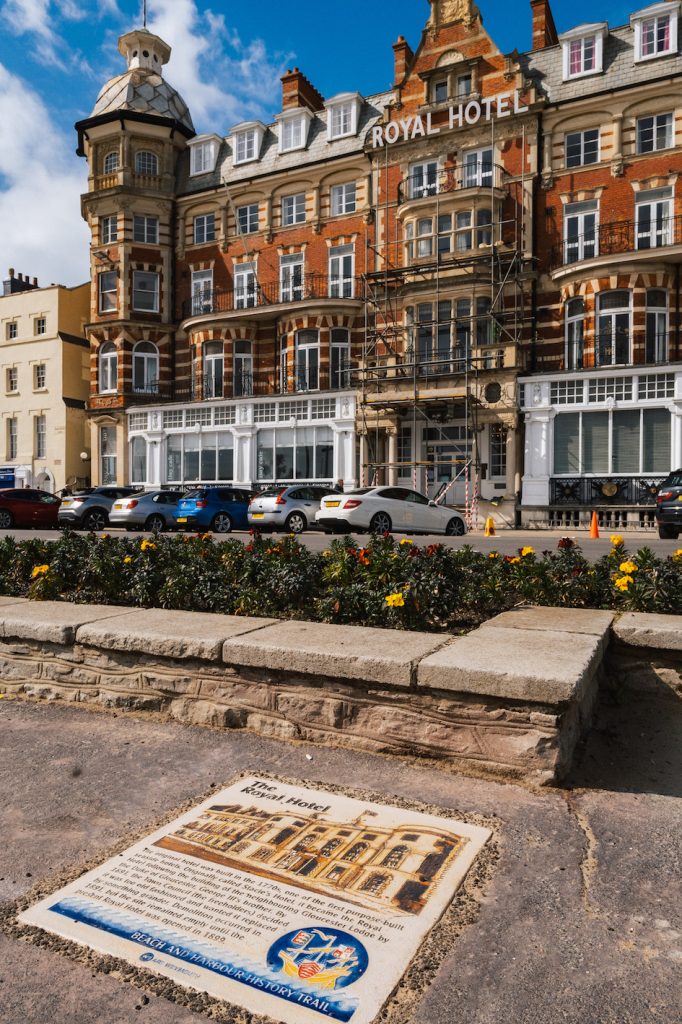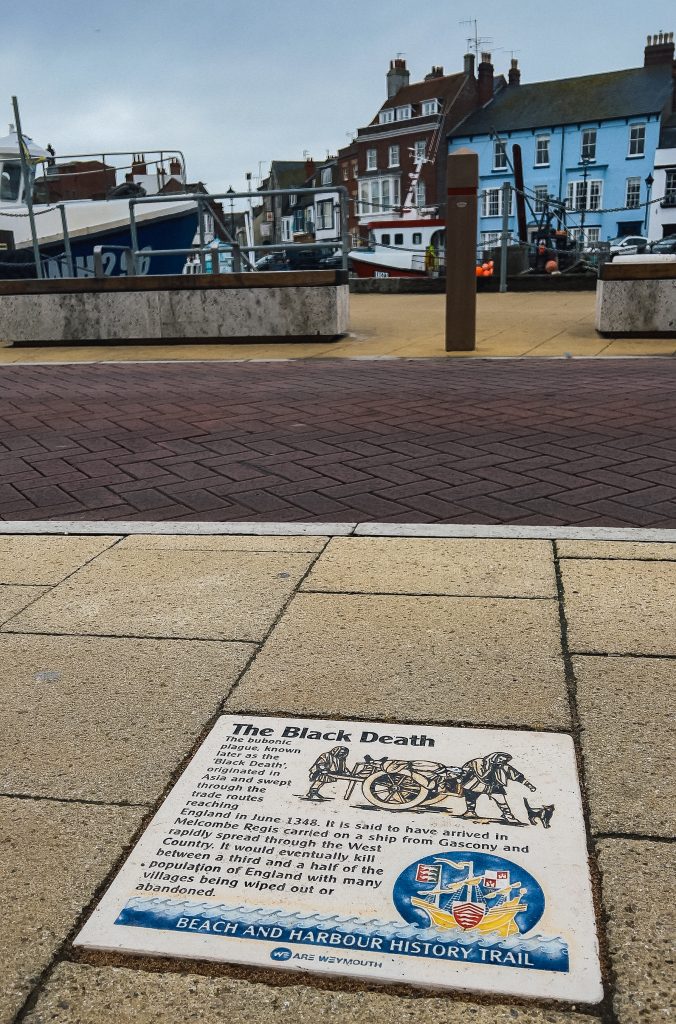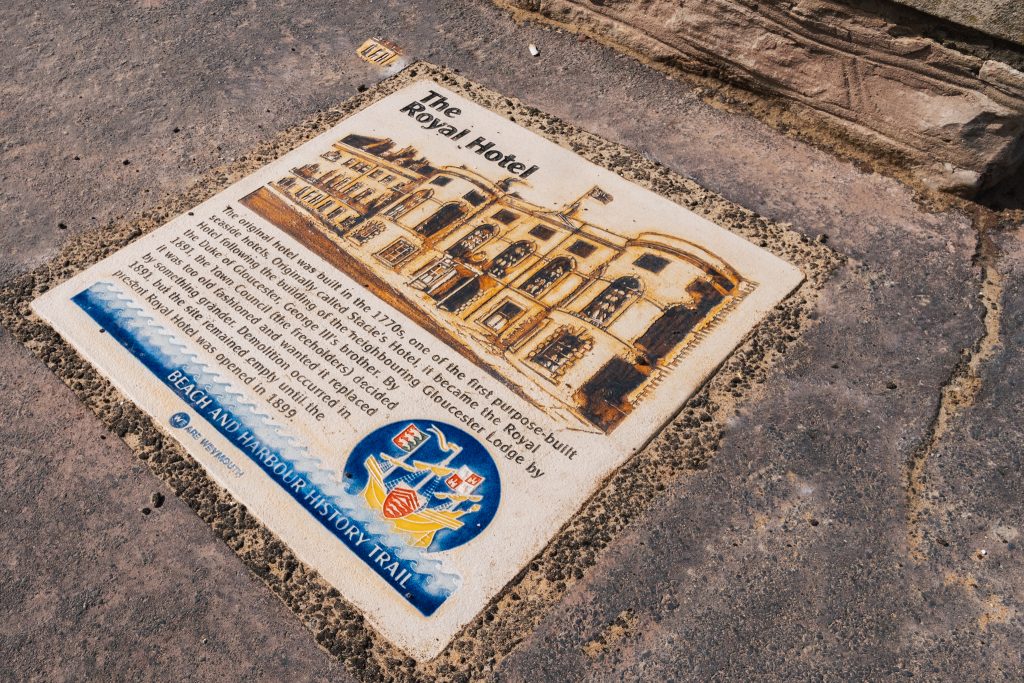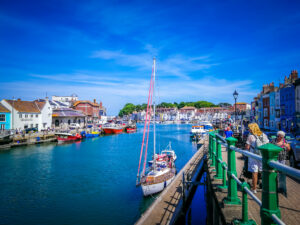— We Are Weymouth announces the installation of 6 new paving slabs throughout the town, further extending the popular Heritage Trail —

We Are Weymouth, the town’s Business Improvement District (BID) is excited to announce the installation of six more custom designed ceramic paving slabs located at key historical landmarks throughout the town – bringing the total throughout the town up to 18!
Drawing attention to Weymouth’s rich history, the Heritage Trail is a fantastic way for locals and visitors alike to explore the town.
The six new slabs extend the trail to as far as Bowleaze Cove, showcasing the Roman Temple, as well as the Stone Pier, Hope Square and the Pier Bandstand.
The full list of 18 paving slabs:
- The Tudor House – Trinity Street
- Holy Trinity Church – by the Chapelhay Steps
- Old Town Hall – High West Street
- Ralph Allen’s House – Trinity Road
- St Mary’s Church – Town Centre
- Custom House – Custom House Quay
- Town Pump & Old Rooms – Outside the Old Rooms
- The Town Bridge – near the Rendezvous
- The Maiden Street Cannonball – opposite the cannonball
- D-Day Embarkation – by the Ferry Steps on Custom House Quay
- The Esplanade – on the promenade near Alexandra Gardens
- The Royal Dipping – on the promenade near the King’s Statue
- The Roman Temple – Bowleaze Cove
- Nothe Fort – on the Stone Pier looking up at the Fort
- Hope Square – Outside of Pilgrim House
- The Black Death – outside Quayside on Custom House Quay
- The Royal Hotel – on the Esplanade opposite the hotel
- The Pier Bandstand – Brunswick Terrace
Dawn Rondeau, Chief Operations Officer at We Are Weymouth (BID) comments: “We are over the moon to announce that our Heritage Trail has now been extended to 18 slabs, what a way to explore the town and learn about Weymouth’s rich and varied past! We’ve had excellent feedback from visitors and locals about the slabs and the trail, with renewed interest in the town’s incredible history. This is an important long-term legacy for the town, celebrating its historical past for generations to come. We look forward to future installations.”

The paving slabs were designed by Ned Heywood of Heritage Ceramics based on artwork supplied by Weymouth Museum’s local history centre which also provided the text. As part of the Heritage Trail, these paving slabs offer facts about the historical landmarks and help to showcase Weymouth’s rich and varied history.
Examples of the text on the new paving slab include:
THE ROMAN TEMPLE
The area where you are standing was once part of an important Roman settlement. The site was first discovered in 1812 when a farmer’s plough struck an object which proved to be an urn containing several hundred Roman coins. Subsequent archaeological investigations thirty years later unearthed hundreds of Roman artefacts many of which are now in the county and British museums. The foundations of the Roman Temple pictured here can be seen just up the hill behind you. It was built in the 4th century A.D. as a two storied shrine and may also have been used as a signal station
HOPE SQUARE
For centuries much of the area now known as Hope Square was an inlet of the harbour, variously called the ‘Ope’, the Hole, or the Cove. The inlet was filled in by 1781 and from the early 19th century building began on this newly created land, part of it becoming Hope Square
BLACK DEATH
The bubonic plague, known later as the ‘Black Death’, originated in Asia and swept through the trade routes reaching England in June 1348. It is said to have arrived in Melcombe Regis carried on a ship from Gascony. It rapidly spread through the West Country and inland and would eventually kill between a third and a half of the population.
The other new plaques feature the Pier Bandstand, the original Royal Hotel, Hope Square and the Nothe Fort. The plaque for the Pier Bandstand shows visitors what the original pier looked like before its demolition in 1986 and the Royal Hotel plaque features the original building which was Weymouth’s first seafront hotel. Meanwhile the two new plaques on the South Harbourside show the construction of the Nothe Fort and how the ‘Ope’ was reclaimed to create Hope Square.
Use the Beach and Harbour History Trail map to explore Weymouth’s rich history visit Heritage – We Are Weymouth After a day discovering all Weymouth’s historical secrets, why not stop for dinner in one of Weymouth’s award-winning restaurants or head to one of many live music menus. Don’t forget a cocktail or glass of wine on the seafront admiring the Bay. For full information on where to stay and what to do, head to Food and Drink – We Are Weymouth






